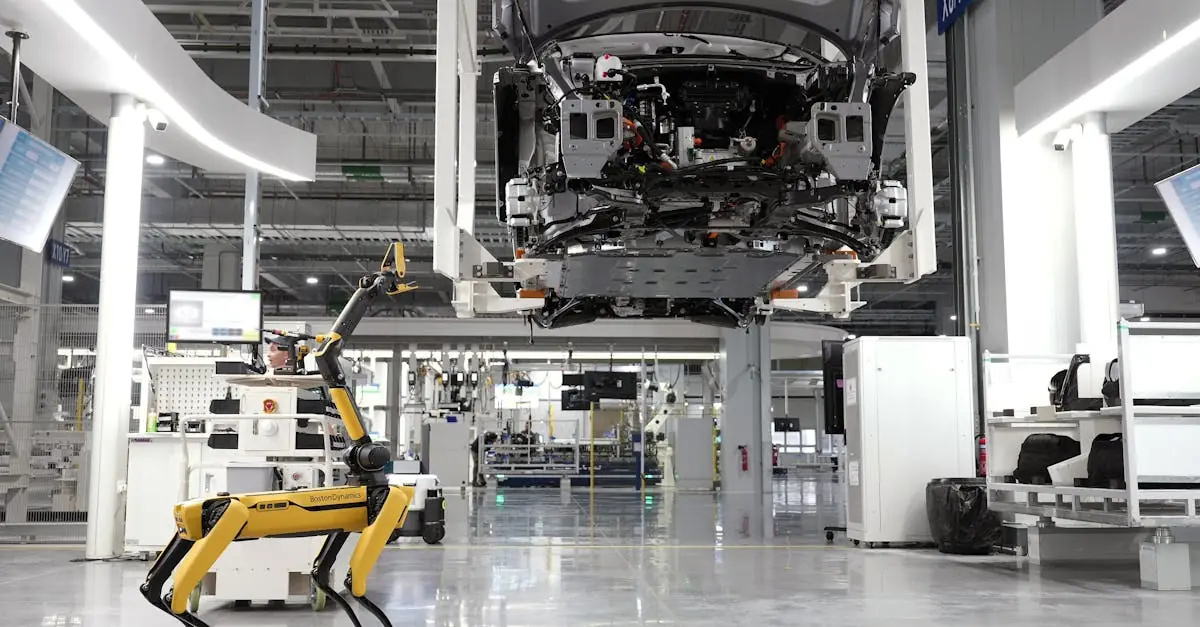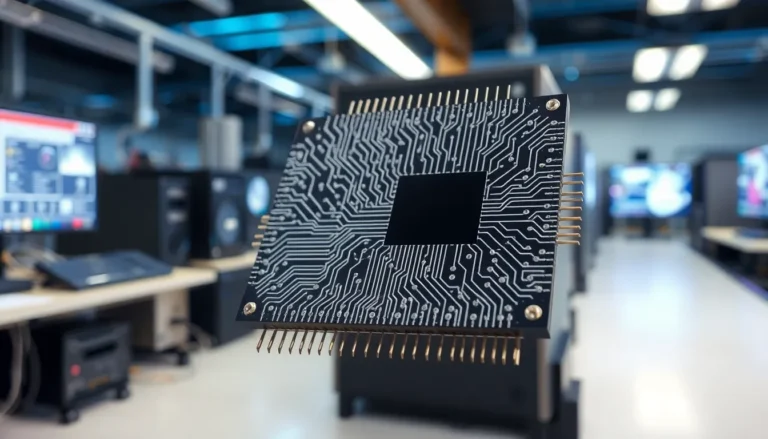In a world where even your toaster might have Wi-Fi, IoT automation is the secret sauce turning ordinary devices into smart, sassy helpers. Imagine a home where your coffee brews itself just as you wake up, or your thermostat knows when you’re feeling chilly before you even realize it. Sounds like magic, right? Well, it’s not—it’s just the brilliant blend of technology and automation at work.
Table of Contents
ToggleUnderstanding IoT Automation
IoT automation revolutionizes how people interact with devices, allowing for smarter living environments. By integrating technology into everyday appliances, it simplifies task management and enhances user experience.
Definition of IoT Automation
IoT automation involves using networked devices to perform tasks without human intervention. Sensors and software collaboration enables machines to collect data, analyze it, and make decisions based on predefined parameters. Smart thermostats adjust temperatures automatically, and security cameras send alerts when detecting unusual activities. This process maximizes efficiency across various settings, from homes to industrial applications.
Importance in Modern Technology
IoT automation plays a crucial role in modern technology ecosystems. It streamlines operations, reducing costs and increasing productivity. Businesses adopt IoT solutions to optimize resource management and improve customer engagement. Consumers benefit from enhanced convenience and energy savings through smart devices that anticipate their needs. As industries continue to evolve, integrating IoT automation remains essential for driving innovation and competitive advantage.
Key Components of IoT Automation
IoT automation consists of several critical components that work together to create an efficient and responsive environment. Understanding these elements reveals how devices interact and perform tasks automatically.
Sensors and Actuators
Sensors collect data from the environment, enabling devices to monitor conditions. Temperature sensors detect heat levels, while motion sensors identify movement. Actuators respond to this data, controlling physical systems like heating or lighting. They convert received signals into actions, such as opening a valve or adjusting a thermostat. This interplay between sensors and actuators facilitates automation, creating smarter environments. In homes, for instance, smart thermostats adjust temperatures based on user habits, ensuring comfort while reducing energy usage.
Connectivity Protocols
Connectivity protocols enable devices to communicate within the IoT ecosystem. These protocols include Wi-Fi, Bluetooth, Zigbee, and cellular technologies. Each offers distinct advantages based on use cases. For example, Zigbee excels in low-power applications, while cellular technologies provide wider coverage. Proper protocol selection ensures reliable data transmission and efficient networking. Devices equipped with these protocols can share information in real time, allowing businesses to monitor operations or users to control appliances remotely. Enhanced communication fosters seamless automation, improving overall efficiencies in various settings.
Benefits of IoT Automation
IoT automation offers several key advantages, enhancing both personal and professional environments significantly.
Increased Efficiency
Increased efficiency emerges as a primary benefit of IoT automation. Devices operate seamlessly, minimizing manual input from users. Sensors constantly collect data, optimizing processes without delay. For example, smart thermostats adjust temperatures automatically based on real-time conditions. Time-consuming tasks become streamlined, allowing individuals and organizations to focus on higher-value activities. Moreover, industrial machinery benefits from predictive maintenance, reducing downtime and extending equipment lifespan. As a result, energy consumption drops, promoting environmental sustainability in the process.
Cost Savings
Cost savings frequently occur with IoT automation in practice. Streamlined operations lead to lower operational expenses for businesses. Automated systems manage resources effectively, reducing waste and improving productivity. For homeowners, smart devices contribute to noticeable reductions in energy bills. Intelligent lighting systems and thermostats automatically adjust according to occupancy and weather conditions. Additionally, data analytics provide insights that help companies identify areas for further cost reduction. Ultimately, these savings enhance overall profitability, positioning organizations favorably in competitive markets.
Challenges in Implementing IoT Automation
Implementing IoT automation presents specific challenges that organizations must navigate effectively.
Security Concerns
Security concerns significantly affect IoT automation implementations. Unauthorized access to devices poses risks, compromising sensitive data. Malware attacks can disrupt operations, leading to data breaches and operational failures. With millions of connected devices, ensuring robust security measures is crucial. Regular software updates and the use of strong encryption methods can mitigate many risks. Establishing comprehensive security protocols greatly reduces vulnerabilities, enhancing user trust in connected systems.
Integration Issues
Integration issues emerge as a primary challenge in the IoT automation landscape. Diverse devices often use varied communication protocols, complicating seamless interactions. Compatibility problems can disrupt system functionality, inhibiting automation benefits. Creating standardized protocols can pave the way for better device interconnectivity. Investing in middleware solutions helps bridge gaps between disparate devices, facilitating smoother operations. Effective integration planning ensures that diverse systems work harmoniously, maximizing the potential of IoT automation.
Future Trends in IoT Automation
Emerging trends in IoT automation signal significant advancements shaping its future, particularly in AI integration and edge computing.
AI and Machine Learning Integration
AI and machine learning increasingly enhance IoT automation. These technologies analyze vast amounts of data generated by connected devices. By identifying patterns and predicting user behaviors, systems can self-optimize routines and adapt in real-time. Smart appliances, for instance, learn preferences over time, providing tailored user experiences and improving efficiency. As AI and machine learning evolve, their integration within IoT platforms strengthens device interactivity and decision-making capabilities, facilitating a more responsive ecosystem.
Edge Computing
Edge computing plays a critical role in the future of IoT automation. Local processing of data reduces latency and enhances response times, which is essential for time-sensitive applications. Devices near the data source handle information, decreasing congestion on networks and enabling faster communication. This approach ensures greater reliability and efficiency, particularly in industrial IoT settings where immediate responses are vital for operational effectiveness. As industries adopt edge computing, the potential for innovative applications that depend on real-time data analysis will increase significantly.
Embracing IoT automation represents a pivotal shift in how individuals and businesses interact with technology. As smart devices become more integrated into daily life the convenience and efficiency they offer are undeniable. The ability to automate tasks not only saves time but also enhances productivity across various sectors.
While challenges like security and integration persist they can be addressed with robust solutions. The ongoing advancements in AI and edge computing promise to further elevate IoT automation’s capabilities. As this technology continues to evolve it will undoubtedly unlock new possibilities and redefine the landscape of smart living and industry.




